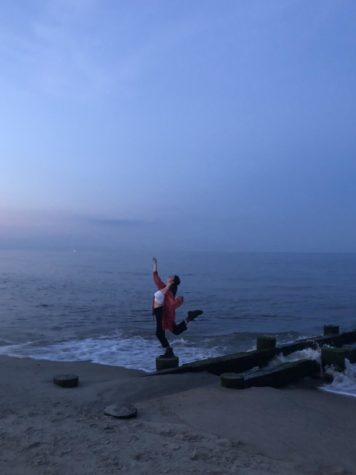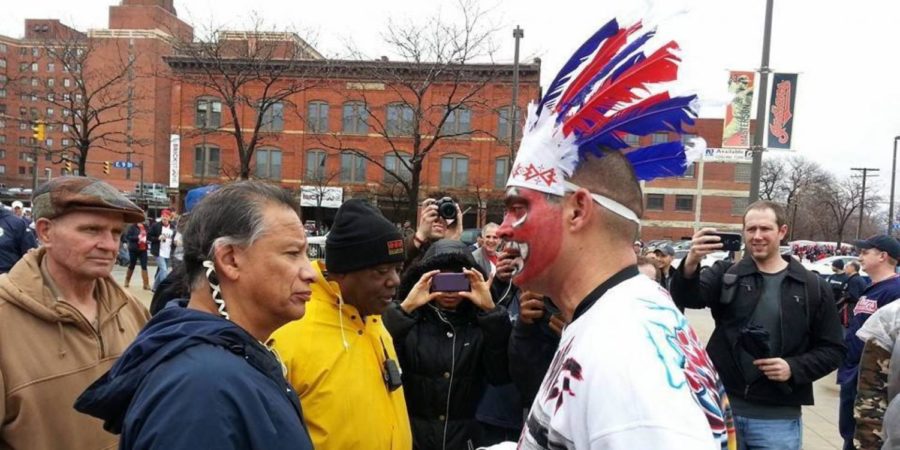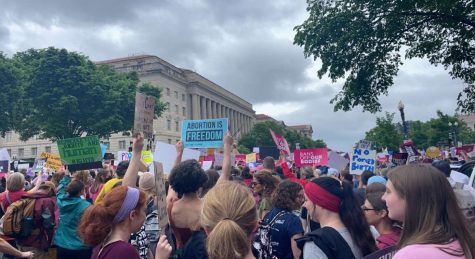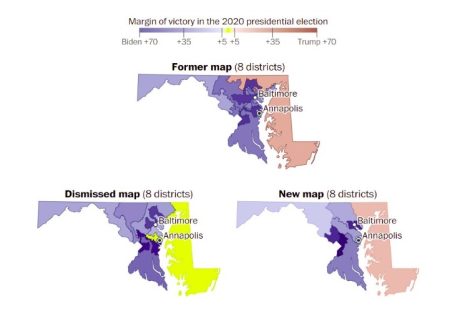School Spirit vs. Cultural Appropriation: Drawing the Line
The appearance of cultural appropriation in schools, often seen in mascots, is an issue that concerns schools across the globe. As part of the course, Native American History, my classmates and I spoke at a conference hosted by SSFS, structured around celebrating the culture and history of Native Americans and the communities that exist today. Students spoke about Sandy Spring’s choice to ban the name of the Washington football team and all apparel with the offensive mascot, while others critiqued various insensitive Native American sports’ mascots, such as the Cleveland Indians. I was asked to discuss an issue of cultural appropriation at Linganore High School in Frederick County. My time dedicated to this project expanded my thinking, prompting me to put my own high school experience in perspective, and ponder the line between school spirit and cultural insensitivity.
Linganore High School’s controversial use of an Indian chief as their mascot, their self-proclaimed title “Linganore Lancers,” and their infamous headdress tradition banned in 2017, have all raised attention and sparked various opinions amongst the student body. Deeply rooted into Linganore traditions and the school pride of many students, the Native American headdress was worn by the leader of the student section at football games and athletic events and began to receive backlash after years of its existence.
According to an article in the Frederick News Post, concern arose from a 58-year-old Native American man named Boston, the uncle of a Linganore graduate. He touched on the actual historical practice of headdresses in Native American culture, comparing it to the foolish use of such a vital cultural symbol at the hands of non-Native American high schoolers:
“Receiving an eagle feather is seen as sacred, and one of the highest honors one can receive. To earn enough feathers to fill a headdress like the ones often seen in popular culture, one would have dedicated years of service and battle to the Native American community. I’m 58, and in my life, I have received one eagle feather. When you see some people wearing one jumping around like a monkey yelling like an idiot, it is disrespectful to our culture.”
The anti-headdress petition statement from Linganore student, Aria Wright, reads: “I care about changing the headdress to a spear because it is culturally insensitive to natives who are still on reserves and to people who are offended by the cultural insensitivity taken place. When I ask other kids from different schools in our community what the first impression they get from our school is they usually say that they think our school is racist, due to the fact that we have white males dressing up in a Native American headdress at games without shirts on with paint all over the front of them.”
There were two petitions, one fighting for the ban on the headdress and the other to oppose it. Frederick News Post quotes Linganore High School’s Principal, Nancy Doll, before finalizing the ban: “We want our school to be a welcoming environment to all students and we felt this was the best way to make sure all students felt welcome at school. After researching what Native American headdresses mean to this culture, we felt it was best to get rid of it.”
All of this information and research on the controversy struck a nerve inside of me. I felt relieved that the tradition had been banned, and glad that Native American voices had been respected. When I reached out to current Linganore students themselves to gain insight into some of the student body’s opinions on the ban, I was surprised by the passion felt by some students about keeping the headdress. I want to emphasize that these are only the opinions of the three students I was able to interview; the views amongst the larger student body may vary.
A current Linganore senior stated, “I was a Junior when someone complained about the headdress being offensive to Native culture. Although it may be true, it represents our school, just like the Washington team represents Washington. In a way it is “offensive” to Native culture, but you see people going to their game and come together and dress up with what?…headdresses. I think it was ridiculous that they had to take the headdress away from the seniors last year. We want to represent our school as Lancers. If they took away the headdress, they might as well change our name. I know for a fact that most if not all students in my class would want the headdress back.”
Here, this student admits that the headdress is offensive, yet justifies it, as it “represents” his school. The value put on school pride and football traditions may be important to high schoolers, but to honor a nation means to respect them by listening to the personal sentiments of those who hold that specific heritage, rather than appropriating their culture.
This student also used the Washington football team’s name, a derogatory and often overlooked slur. There lies a disconnect between language and historical context; when we hear the name of the Washington team, we often associate it with television, sports, and lighthearted entertainment, forgetting that this language dehumanizes an entire group of people. Our empathy slips away when we detach certain language from its original roots. A Native American speaker and activist at the conference brought up a significant point: would students who feel passionate about keeping the headdress willingly wear such a thing in front of actual Native American people?
Another Linganore senior feels similarly, saying, “There were never any instances where we were insulting or mocking the culture. What didn’t make sense to me is that the people who brought it up with the administration because they felt offended, were white. If actual Native American people were to tell administrators that the headdress made them uncomfortable, that would make more sense.”
I realized that this student was simply misinformed, for the those who raised concern over the headdress were not white. However, in the case that they were, it is not the job of Native Americans, or any minority, to always be the ones to advocate for themselves. It does not require being Native American to understand why the headdress is deeply problematic.
Like any school, there are mixed opinions on this issue. When researching the ban and talking to students, I found it interesting that some saw the harm in the Linganore tradition, while others strongly argued that the ban should be undone. The Linganore students that I talked to seem to have good intentions, yet remain misinformed of the distinction between “honoring” a culture and respecting a culture that is not theirs.
It is crucial we recognize that Native culture is often twisted and mocked through offensive images, media, and sports and school mascots. Native American history is constantly retold through a Euro-American lens, one that must be questioned and expanded to include other perspectives. We must not forget the brutal treatment of Native Americans throughout history: bounty laws that legalized their murder, the Indian Removal Act that pushed thousands off their land for the sake of gold, Indian conversion boarding schools, and several other instances of hate. Headdresses, offensive mascots, and slurs as football team names must be questioned. Language and symbolism are power, for they contain years worth of history.
This issue of racial insensitivity and cultural appropriation is seen time and time again in schools; by speaking out and making ourselves heard, we truly can create change. If an issue like this arose at Sandy Spring, would you speak out?
Sources
https://www.fredericknewspost.com/news/education/dueling-petitions-over-native-american-hea
ddress-spark-controversy-at-linganore/article_efc48a81-b357-5e8f-8ae7-9ed26596ec7e.html
https://www.change.org/p/aria-wright-stop-linganore-high-from-dressing-as-natives
Cover Photo: https://thedanamariner.com/4713/opinion/professional-sports-and-cultural-appropriation/

Hellloooo
I'm Maeve Friedman and I am a senior at SSFS. I serve as a Wildezine staff writer and pop culture editor. Language and creative writing have...







Maya Long • Jan 24, 2019 at 3:14 pm
I think the one thing that bothered be about the student in your article’s reaction was the fact that he felt it was his and his school’s item to use. The headdress is a Native American symbol and therefore, it is in fact theirs.
This reminds me a lot of recent time with cultural appropriation of black culture by white people. A lot of the time, white people use corn rose in their hair because they think it’s cool. When white people start to think like that, the cultural appropriation expands to harmful levels and they start to think what isn’t theirs is theirs.
Also, the Washington football name on campus is one of the things I am proud of our school for doing. I still think they should change the name and if the NFL won’t, I’m glad we’re taking a stand.
I’d like o think if this sort of the happened at SSFS I would stand up but I won’t know unless it happens and hopefully it doesn’t.
Wonderful article Maeve, made me think a lot!
Ariel Voorhees • Dec 19, 2018 at 2:16 pm
” ‘I think it was ridiculous that they had to take the headdress away from the seniors last year.’ ”
This sort of speech strikes me as terribly entitled and selfish. When a white male student claims that righting a wrong (in this case, banning an offensive symbol) constitutes ‘taking something away’ from him, he’s perpetuating the myth of white victimhood and serving his own comfort with the status quo rather than helping to create a more inclusive and equitable society.